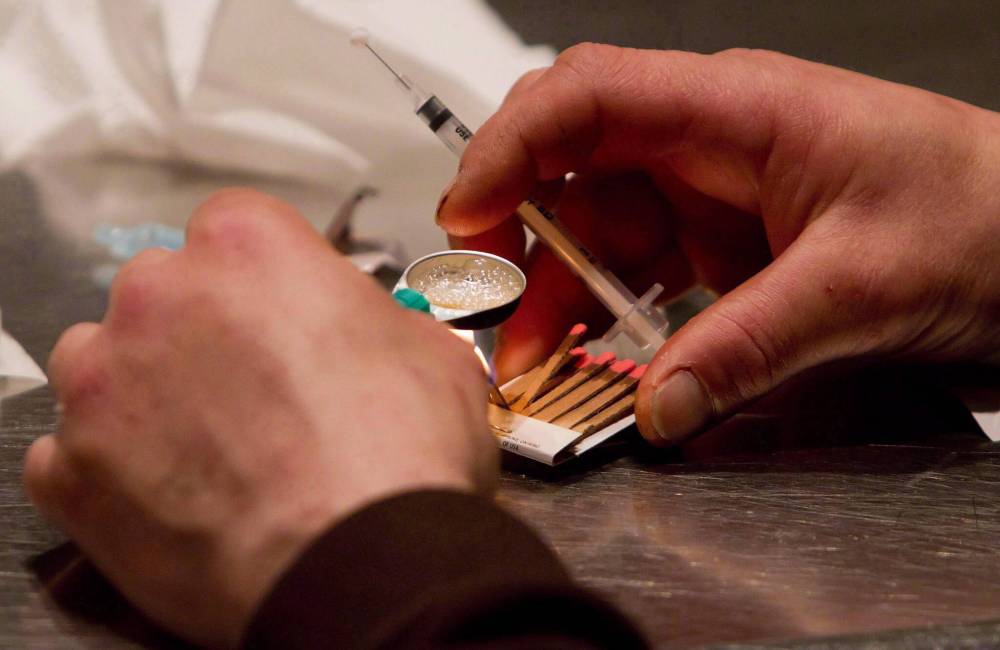Safe consumption sites and unacceptable risk
Advertisement
Read this article for free:
or
Already have an account? Log in here »
To continue reading, please subscribe:
Monthly Digital Subscription
$0 for the first 4 weeks*
- Enjoy unlimited reading on winnipegfreepress.com
- Read the E-Edition, our digital replica newspaper
- Access News Break, our award-winning app
- Play interactive puzzles
*No charge for 4 weeks then price increases to the regular rate of $19.00 plus GST every four weeks. Offer available to new and qualified returning subscribers only. Cancel any time.
Monthly Digital Subscription
$4.75/week*
- Enjoy unlimited reading on winnipegfreepress.com
- Read the E-Edition, our digital replica newspaper
- Access News Break, our award-winning app
- Play interactive puzzles
*Billed as $19 plus GST every four weeks. Cancel any time.
To continue reading, please subscribe:
Add Free Press access to your Brandon Sun subscription for only an additional
$1 for the first 4 weeks*
*Your next subscription payment will increase by $1.00 and you will be charged $16.99 plus GST for four weeks. After four weeks, your payment will increase to $23.99 plus GST every four weeks.
Read unlimited articles for free today:
or
Already have an account? Log in here »
Hey there, time traveller!
This article was published 03/02/2025 (310 days ago), so information in it may no longer be current.
Let’s take a trip down into your bowel. Or, maybe, into the bowel of someone close to you. Or, more accurately, into the bowels of downtown drug culture in Winnipeg.
Let’s talk about Lomotil. Not just Lomotil, but its generic equivalents as well.
In some ways, Lomotil is a sort of classic medical equivalent of “the enemy of my enemy is my friend.”

THE CANADIAN PRESS/Darryl Dyck
Drug users often don’t know what they’re using.
Here’s why — the number one side effect of treating people with opioid drugs for pain or anything else is constipation. The side effect is so common that it hits 40 to 90 per cent of people being treated with opioids, and happens because, along with everything else they do, opioid drugs slow down the entire digestive tract.
(We could more thoroughly spell out the mechanics of how that works, but perhaps it’s taking things too far. And taking things too far, after all, is what Google is for.)
So, researchers harnessed a bad thing to do a good thing: they took the side effect of opioid use to treat the exact opposite of constipation. The opioid they used is diphenoxylate hydrochloride: it does to the digestive system exactly what other opioids do, and to prevent it, like many other opioids, from being abused, they combined it with atropine.
Atropine, which actually first came from the poisonous plant known as deadly nightshade, counteracts some of the unwanted effects of the diphenoxylate. (The atropine isn’t completely effective in its role as supporting actor — side effects listed for the combination still warn that “physical dependence, psychological dependence, and abuse are possible at high doses.”)
After science put it all together, it was marketed as a prescription-only.
The combination doesn’t actually solve the issues causing the diarrhea, but it does address the effect.
So, how do we get from an anti-diarrheal prescription drug to the gritty edges of Winnipeg drug culture?
Well, unlike the mechanism that makes Lomotil work, the connections aren’t easily and directly drawn out.
Last Sunday, ten men overdosed in a span of two hours in inner city Winnipeg, stretching emergency services to their limits. The culprit is not certain in all of the cases, but the main suspect is a drug combination with the nickname “Brown down.” Brown down is a mixture of a combination of benzodiazepenes, fillers, and sometimes opioids.
On Sunday, a drug alert issued by Safer Sites, sent out a drug alert saying that Brown down samples had tested positive for … diphenoxylate hydrochloride.
Those who took the drug most likely had no idea that it had a drug used for halting diarrhea, how much there was in their drugs, or even where it came from. Nor do we.
Some editorials look for solutions. Others explain issues. This one, perhaps, is just looking for a little understanding, with a small explanation of a solution tucked in, too.
What it’s asking you to understand is that some people are so desperate that they don’t even care what they are putting into their bodies to get the high they’ve come to need.
Lomotil is always the same: the basic formulation is 0.025 MG of atropine and 2.5 MG of diphenoxylate in a round, white tablet with “SEARLE” stamped on one side and “61” on the other side. The tablet also contains acacia, cornstarch, magnesium stearate, mineral oil, sorbitol, sucrose, and talc.
Street drugs don’t come with a list of ingredients or an expectation of purity.
The solution we’re trying to explain the need for, perhaps in the most roundabout of ways, is that there’s a reason there have to be safe consumption sites — including the capability for testing street drugs for dangerous contaminants — and available treatment to help protect those around us who are most at risk.






